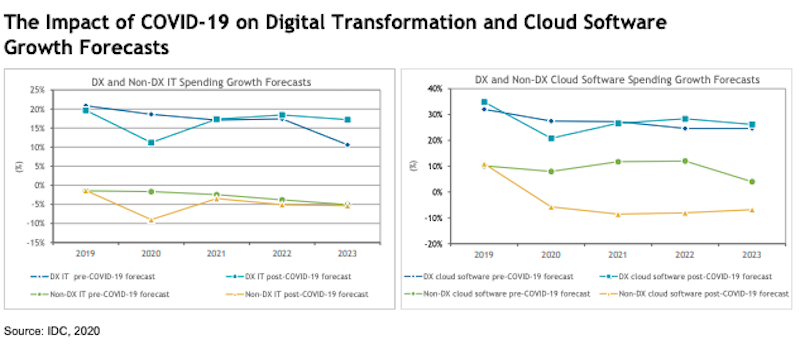Cloud-based software is key in navigating the COVID-19 crisis. It enabled many businesses to keep their workforces connected, even when offices and shops closed. But cloud-based software offers much more than a way to take the office on the go. It also provides a springboard for digital transformation, innovation, and collaboration.
There’s little doubt that cloud-based software will take us to extraordinary places. But where did it come from and how has it changed? And most importantly, how can businesses use it to get ahead in the New Normal?
What is cloud-based software?
Simply put, cloud computing uses remote servers to store and secure data. Users can then access this data via Internet-enabled devices, whenever and wherever they please. This lets businesses share information outside of the office, and enables team members to view the same data in real-time. In the wake of COVID-19, this was a game-changer.
What types of cloud computing are there?
There are three types of cloud computing:
Software as a Service (SaaS)
The most common type of cloud computing, SaaS delivers fully functional, user-ready applications that are easy to customise. SaaS providers handle back-end concerns like maintenance and troubleshooting. This makes it a hassle-free choice for businesses without robust IT departments. Salesforce’s CRM tools are an example of SaaS.
Infrastructure as a Service (IaaS)
Iaas is a popular choice for organisations that want to take charge of customising their own solutions. Perhaps the greatest benefit of IaaS is it helps businesses scale rapidly since additional capacity can be accessed on demand. IaaS hosts typically provide organisations with infrastructure elements such as servers, hardware, and firewalls. However, users must provide their own operating systems and some middleware.
Platform as a Service (Paas)
PaaS falls somewhere in between SaaS and IaaS. It gives businesses the developmental tools they need to create their own apps! PaaS providers also handle security and infrastructure. The Salesforce Platform is an example of PaaS. It provides users with the ability to easily build apps by clicking and dragging components.
These three types of cloud computing all share the same goals:
provide the user with easier data access
allow greater capacity to scale the business
increase agility and security from anywhere in the world
What’s the history of cloud-based software?
The idea of renting computer space goes back to the 1960s, before the spread of affordable PCs. But it wasn’t until the new millennium that cloud computing came into its own. Here’s a bite-sized timeline of the history of cloud computing:
- 1951: The first commercial computer – the UNIVAC – is released. Using a sample of just 1% of the American voting population, a UNIVAC correctly predicts the results of the 1953 US presidential election – a landslide victory for Dwight D. Eisenhower.
- Early 1960s: Remote computing is born as RJE (remote job entry) is put into practice, enabling multiple users to simultaneously access a computer from different locations.
- Mid-1960s: Psychologist and computer scientist J.C.R. Licklider imagines the first computer network, an idea that leads Bob Taylor and Larry Roberts to create ARPANET, a precursor to the Internet.
- 1970s and ‘80s: The use of remote storage is introduced in various forms, and by the early ‘90s, it started to be depicted as a cloud in diagrams for patents.
- 1996: Compaq Computer Corporation uses the term ‘cloud’ in a business plan.
- 1999: Salesforce launches its groundbreaking CRM software in the cloud, ushering in the gold rush of cloud computing. Salesforce sets the stage for cloud-based software to come, like G-Drive, Dropbox, and iCloud.
- Mid-2000s: Amazon deploys a cloud-based application to manage its internal storage, and began to offer this as a commercial service in 2006.
- Late 2000s: Google launches Google Docs, a free service that uses cloud-based word processing software. Google quickly adds Google Sheets, Google Slides, and Google Forms.
What does the future of cloud computing look like?
Cloud computing has exploded in the past decade. And it should only grow and evolve further, especially since it’s a crucial pillar for digital transformation. Digital transformation (DX) was a priority before the pandemic, but the shift to remote workforces and the need to engage in new ways has only highlighted its importance.
According to an IDC white paper, investment in cloud-based technologies will increase from less than 25% of all DX spending in 2019 to almost a third by 2024.
Digital transformation has been a popular topic for several years, but the new business landscape has made it a necessity. Connecting employees and customers shouldn’t have to depend on rows of PCs, daisy-chained together in a central office that everyone has to travel too. Not when there’s a better, faster world waiting in the cloud.
To read more about how digital transformation and cloud-based software can help companies navigate COVID-19, download the IDC white paper.






